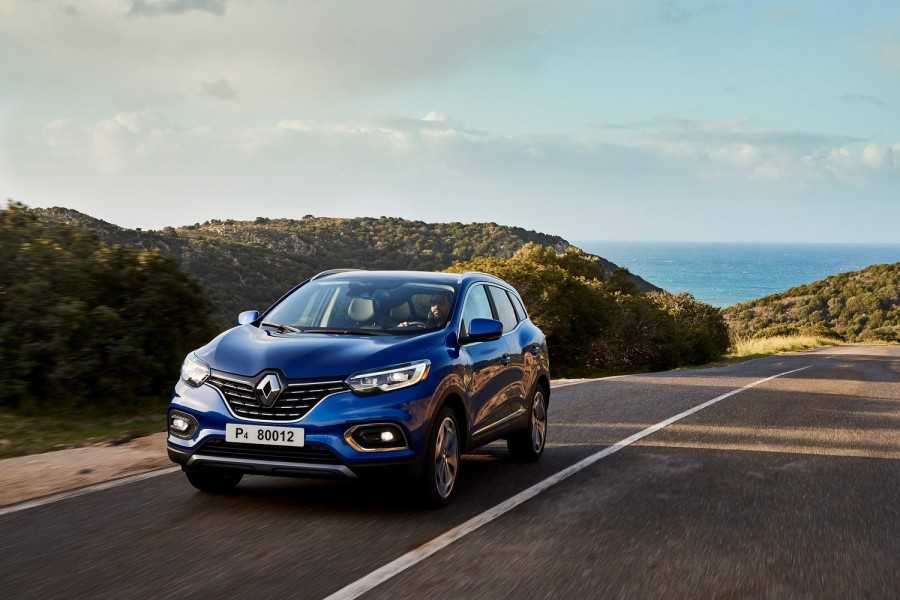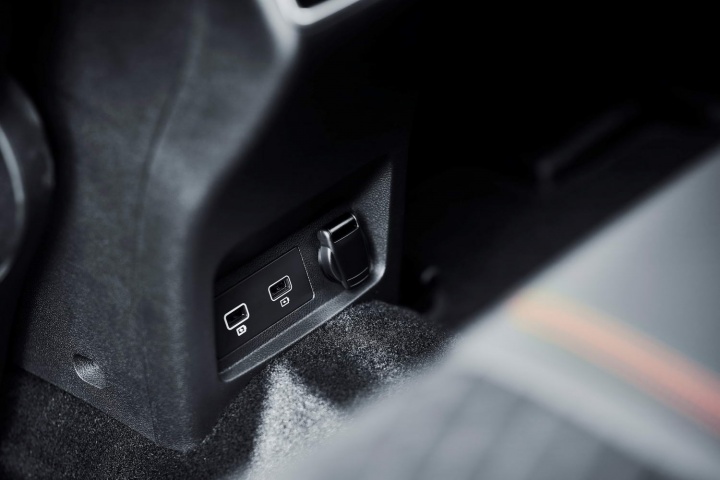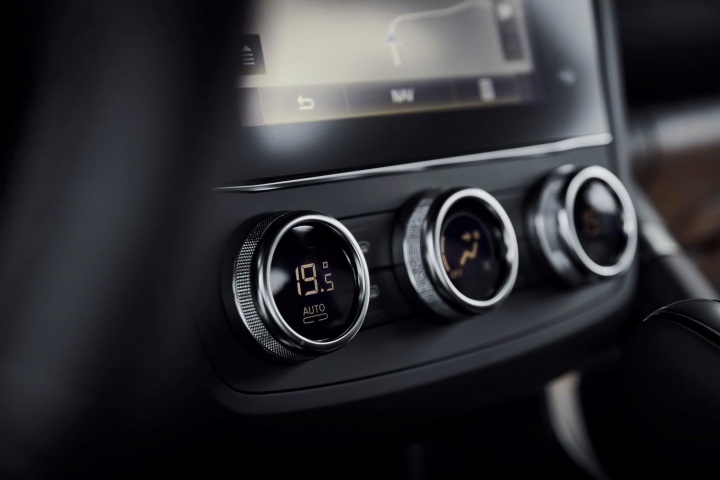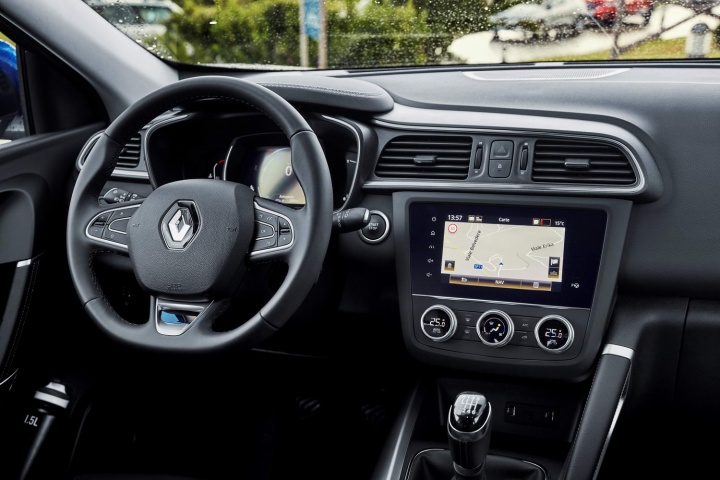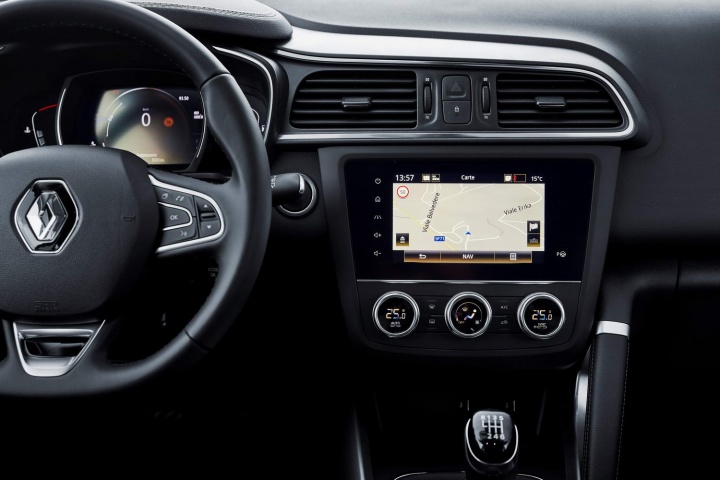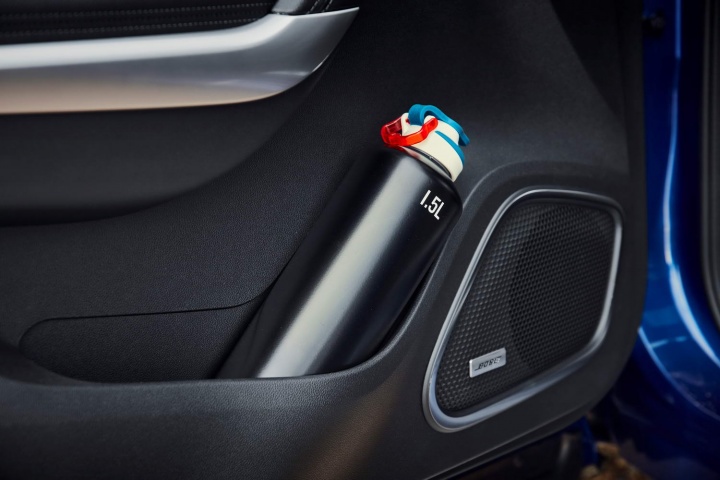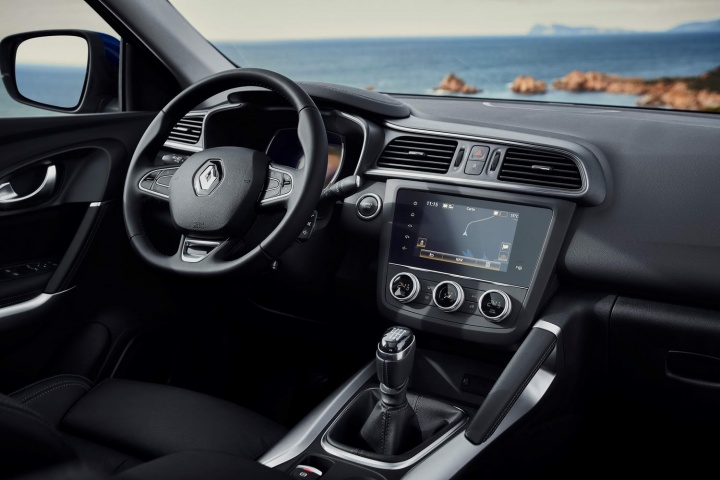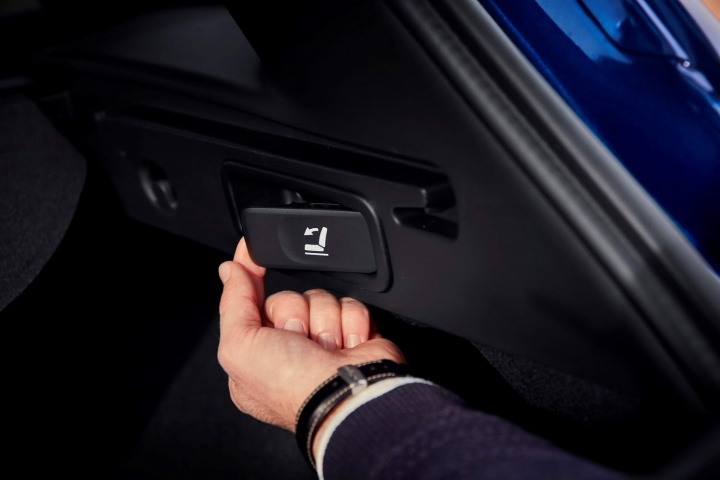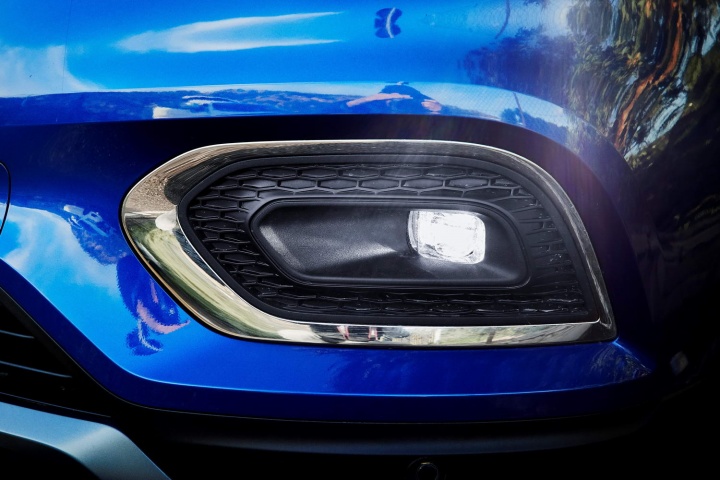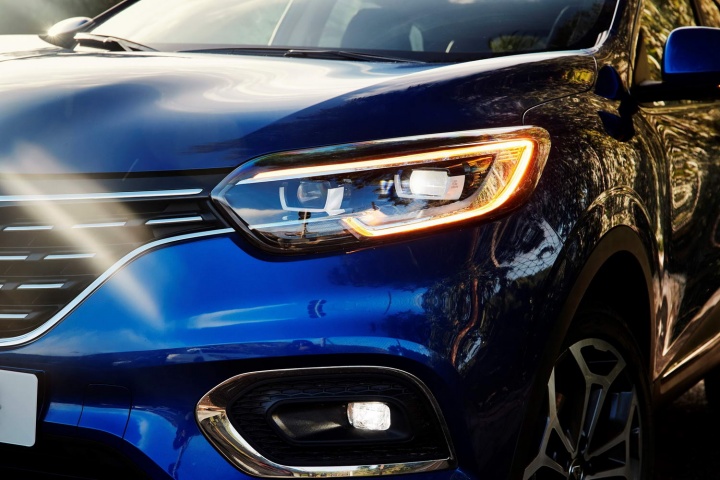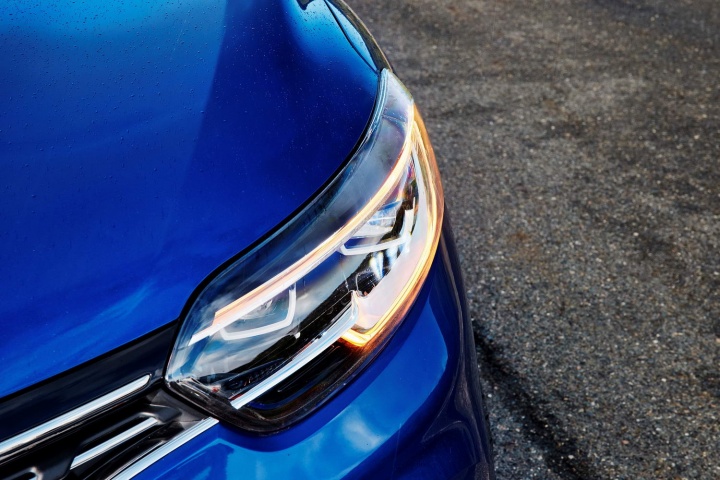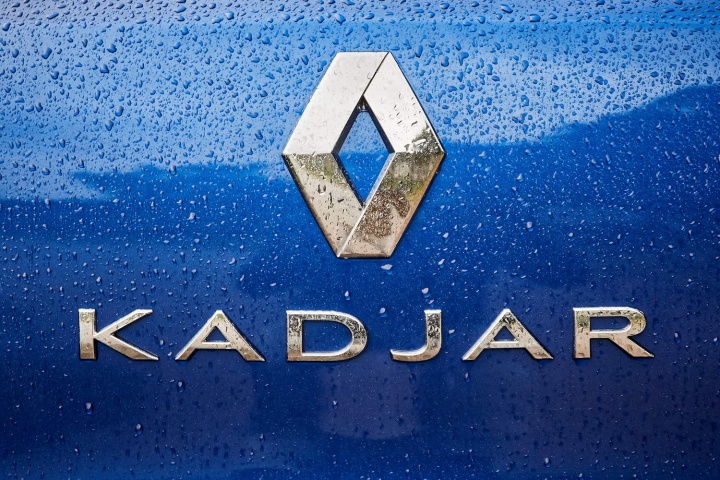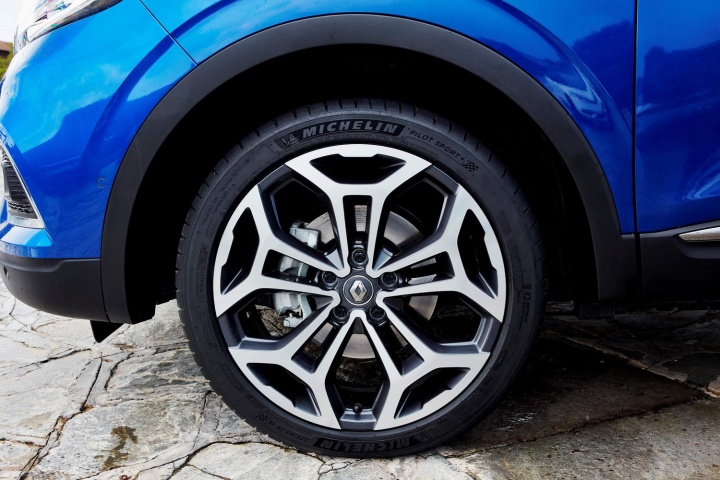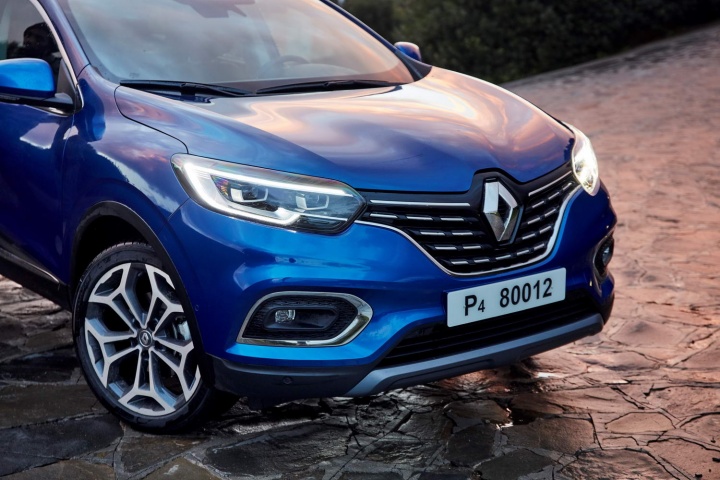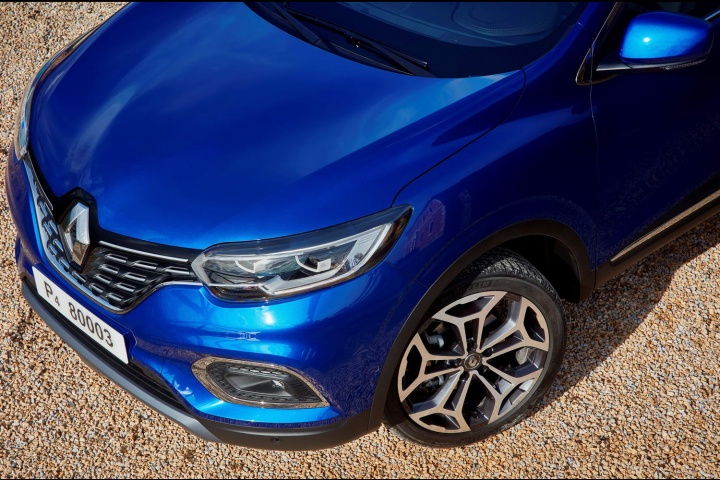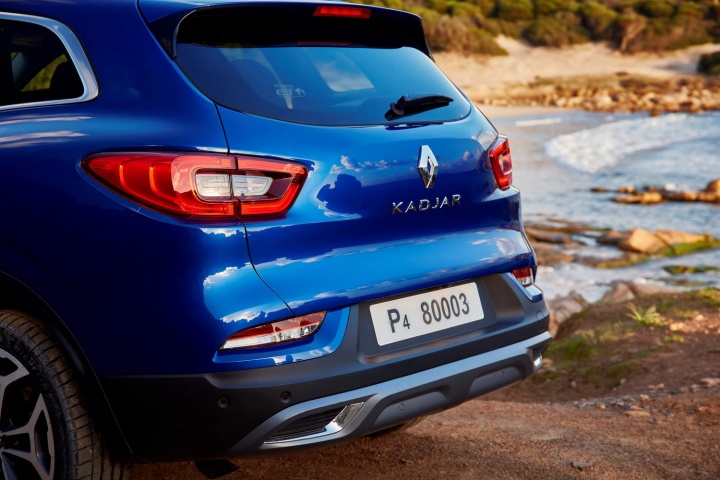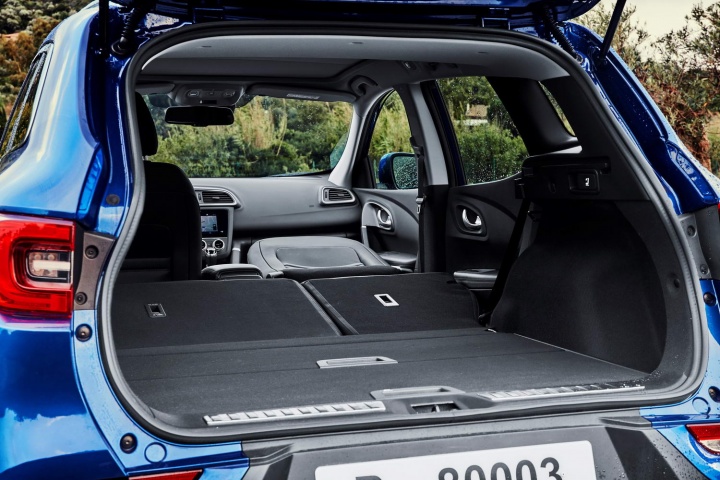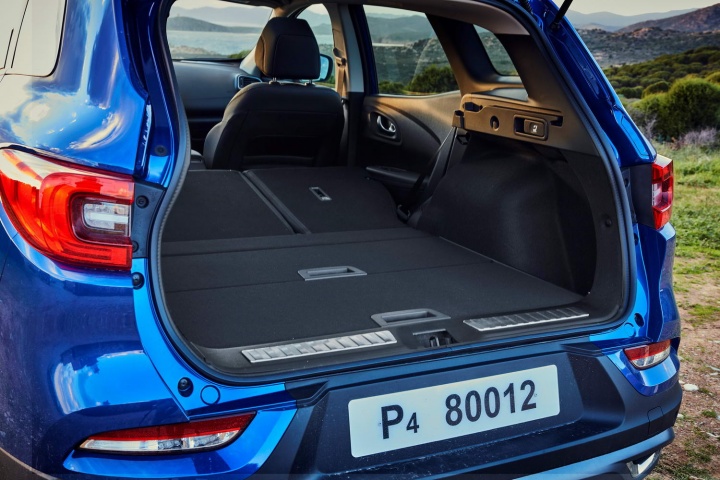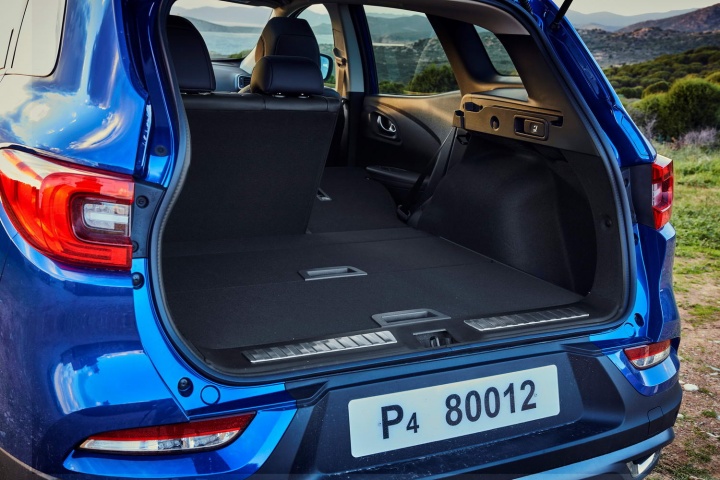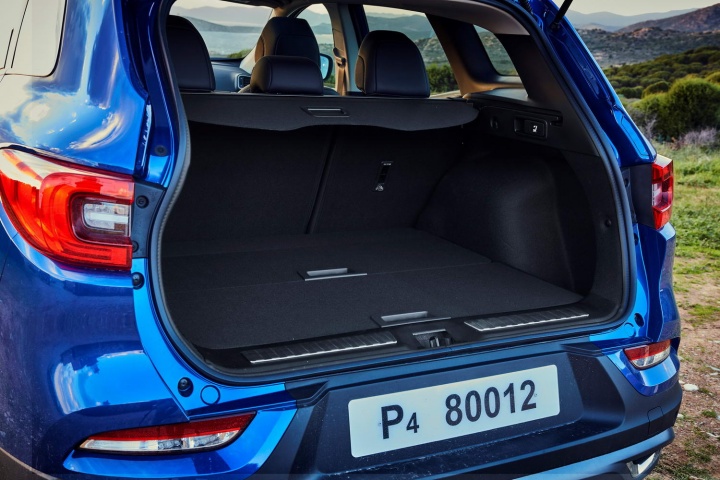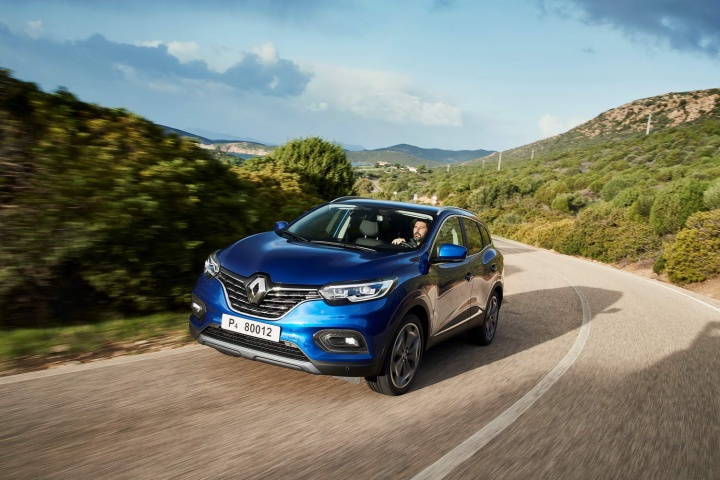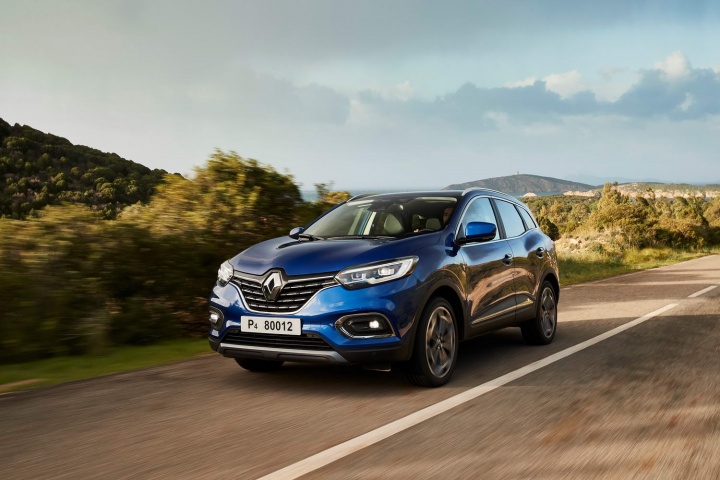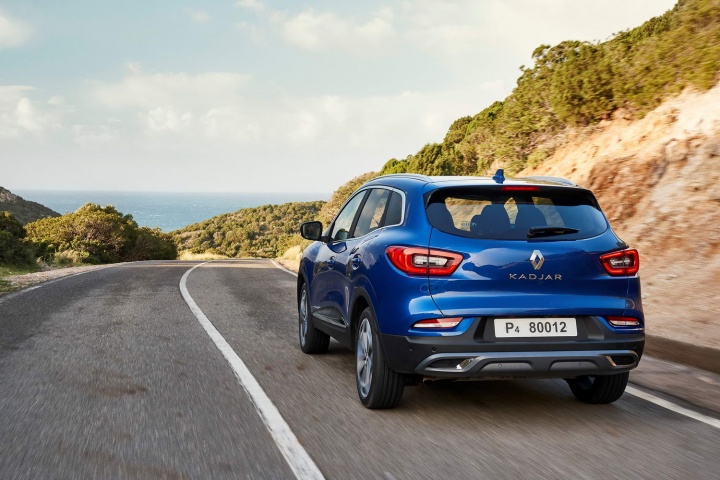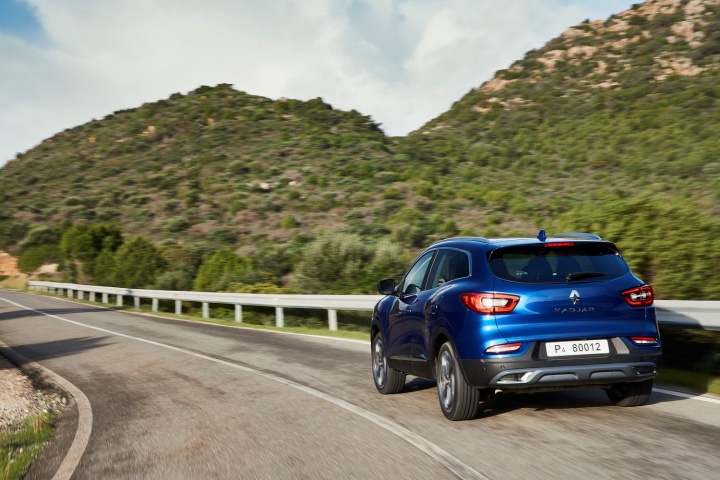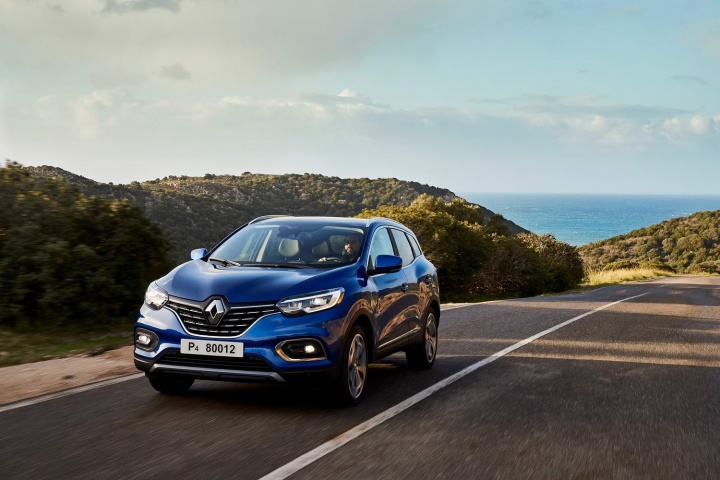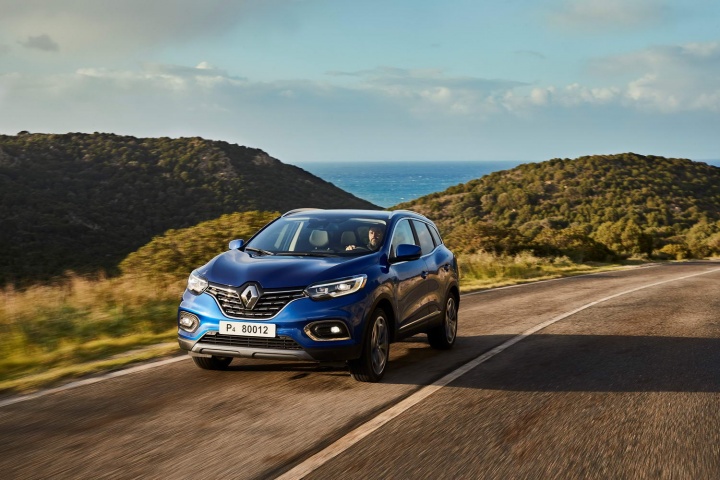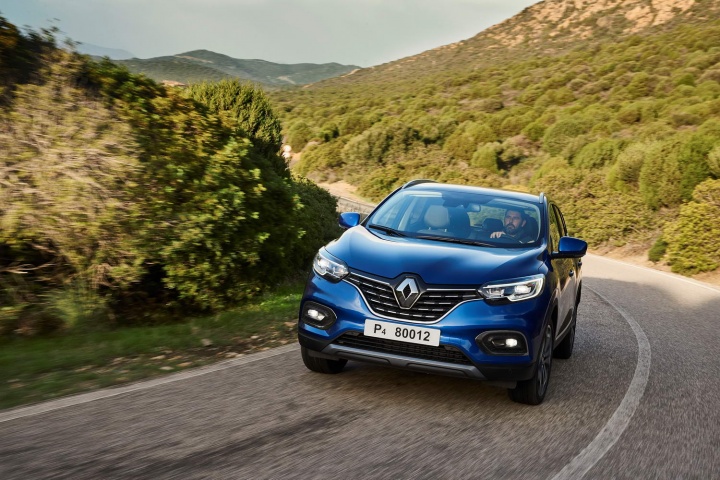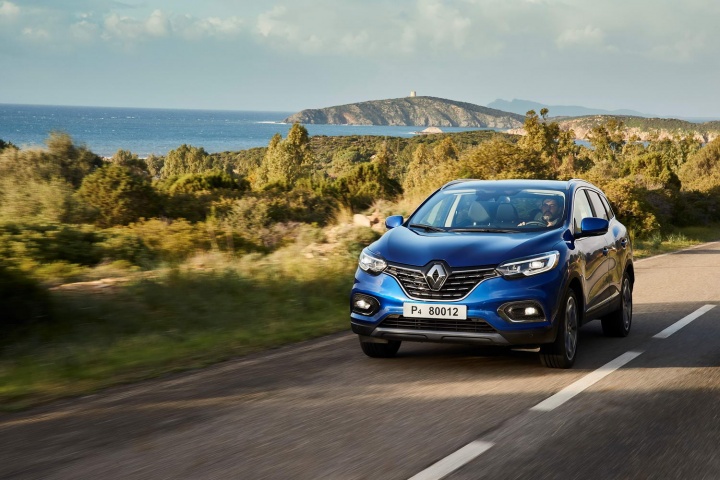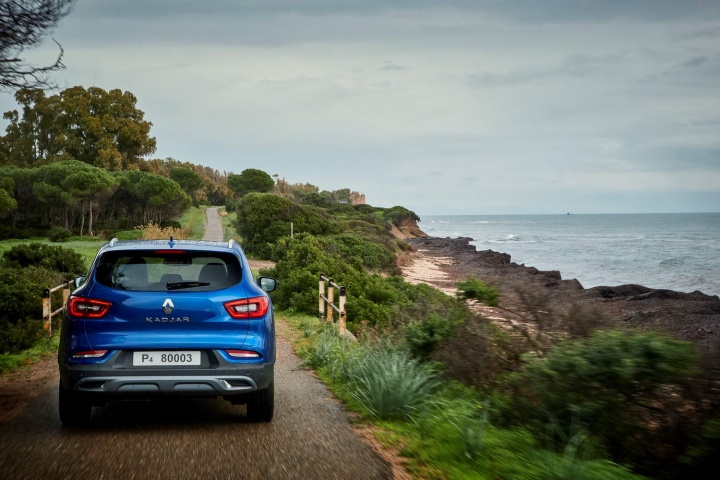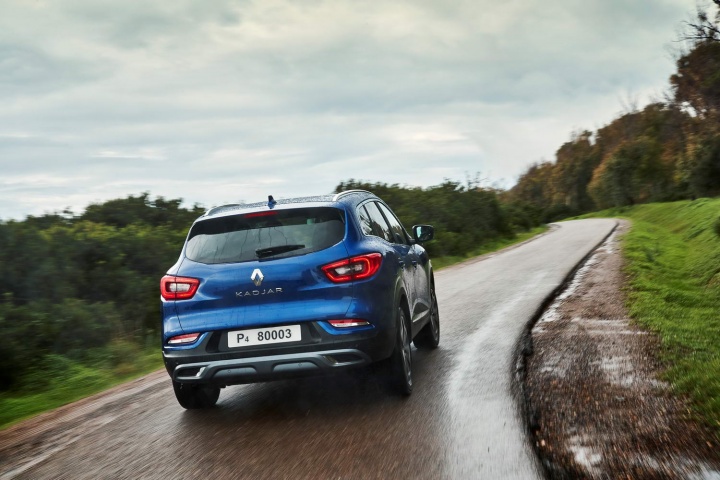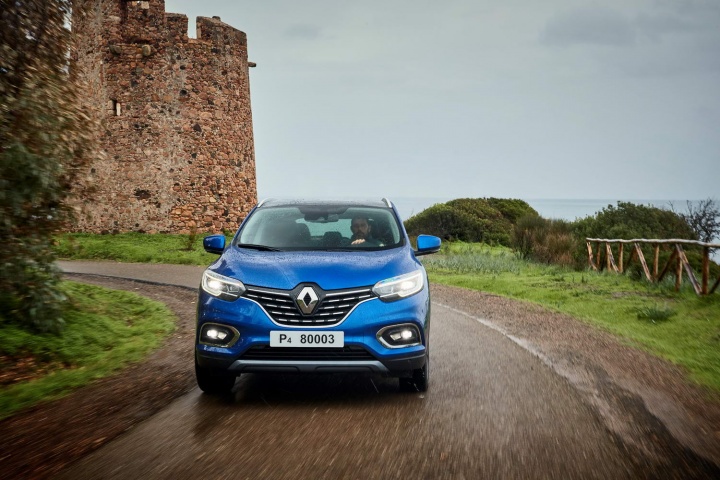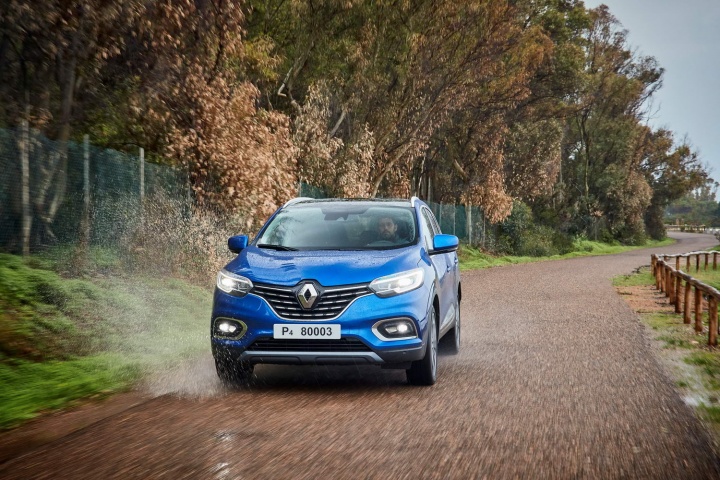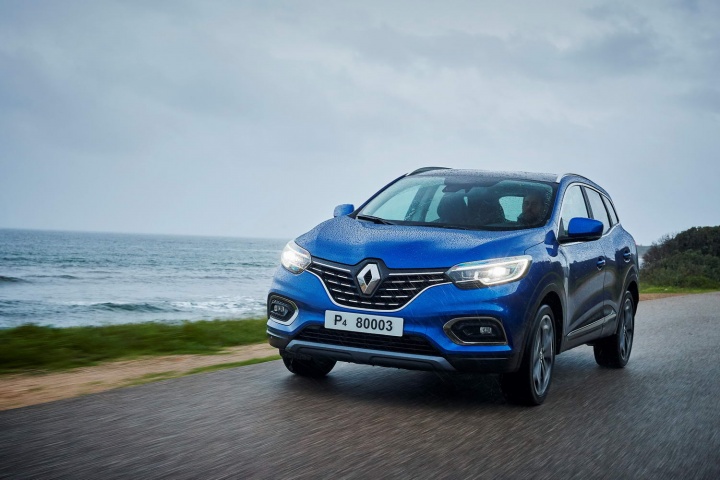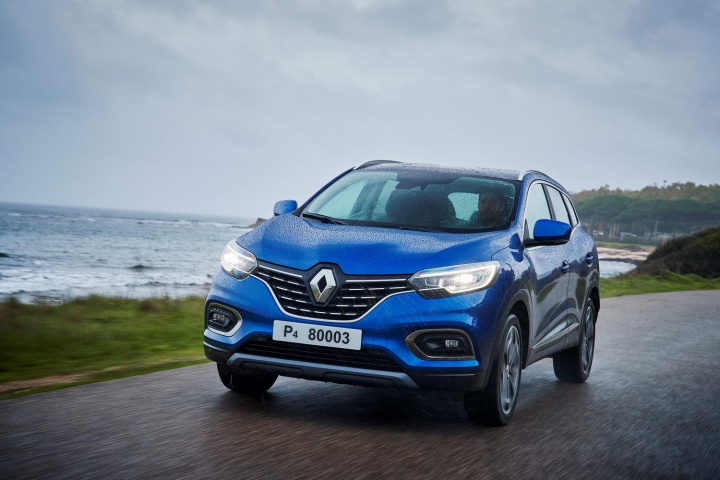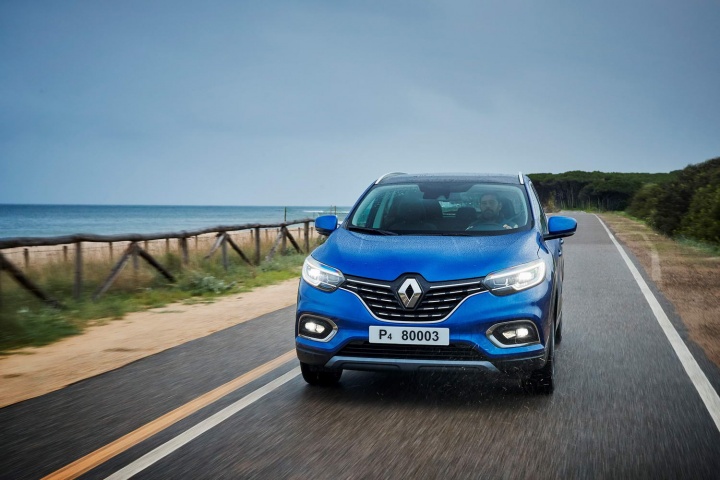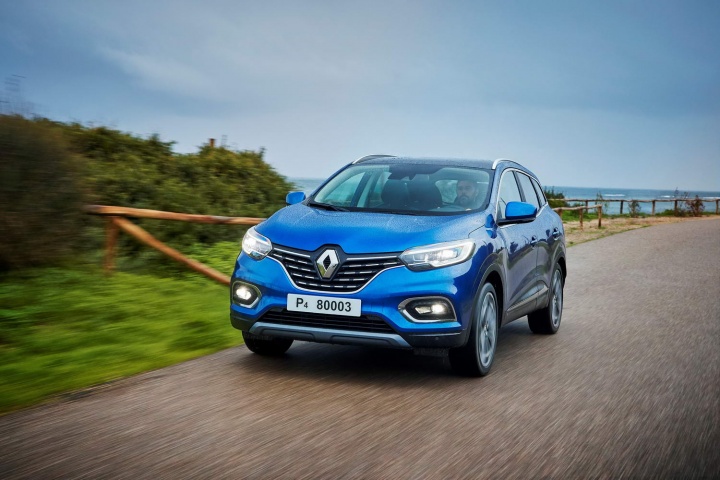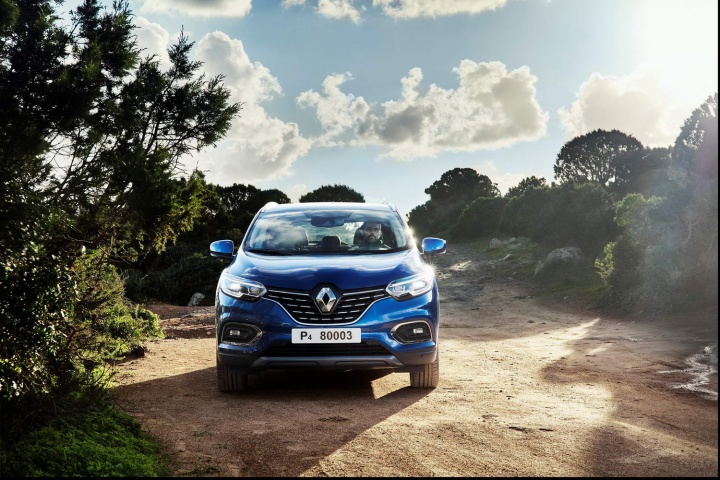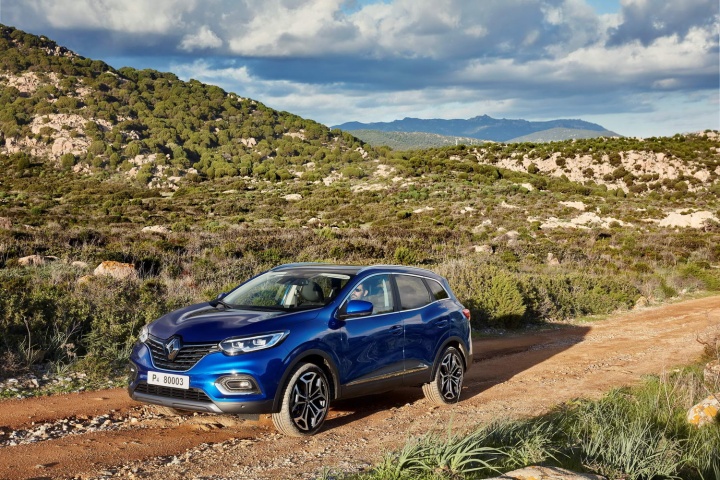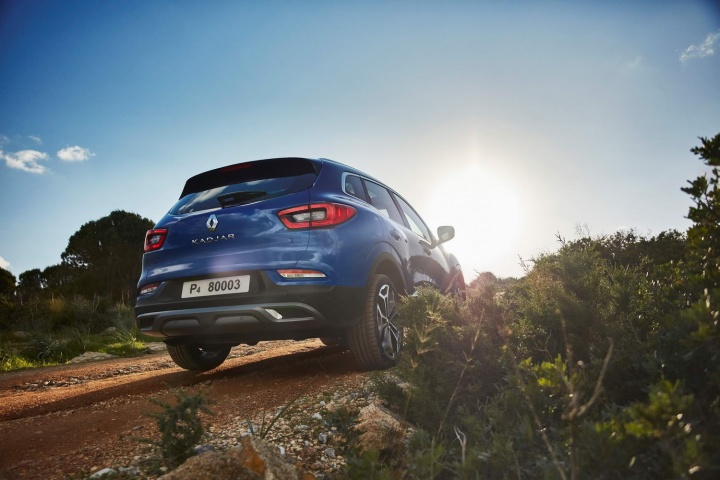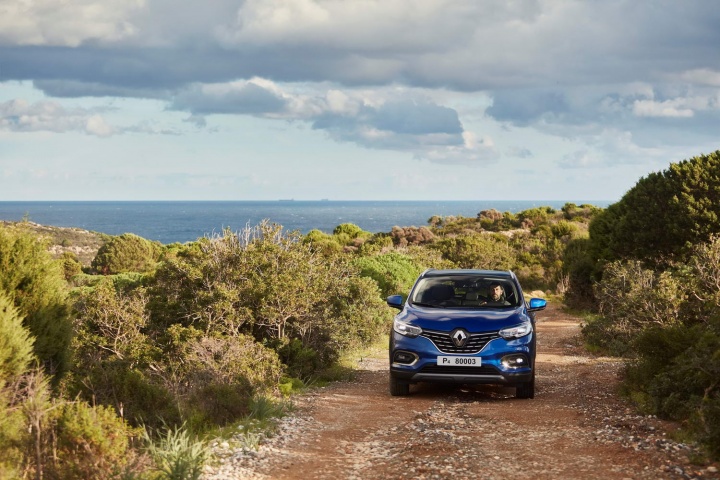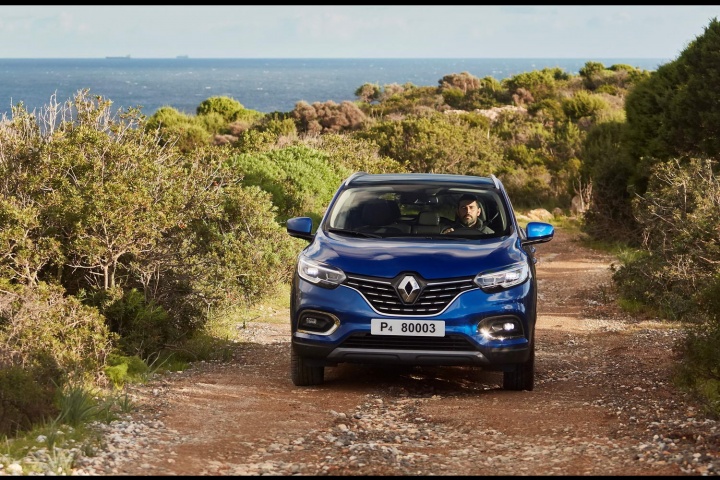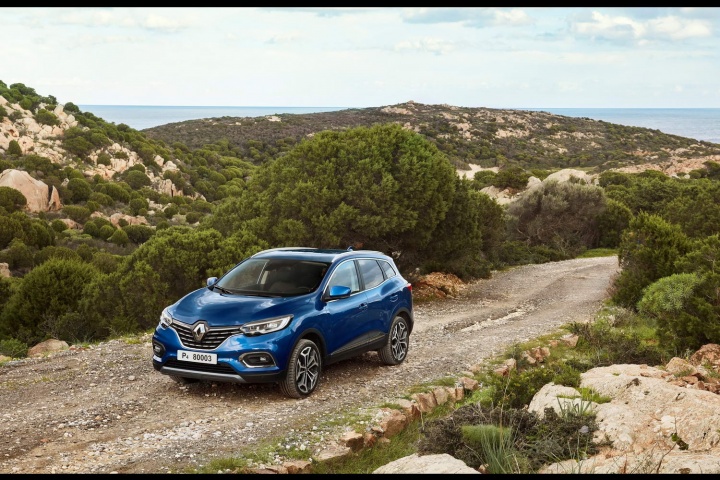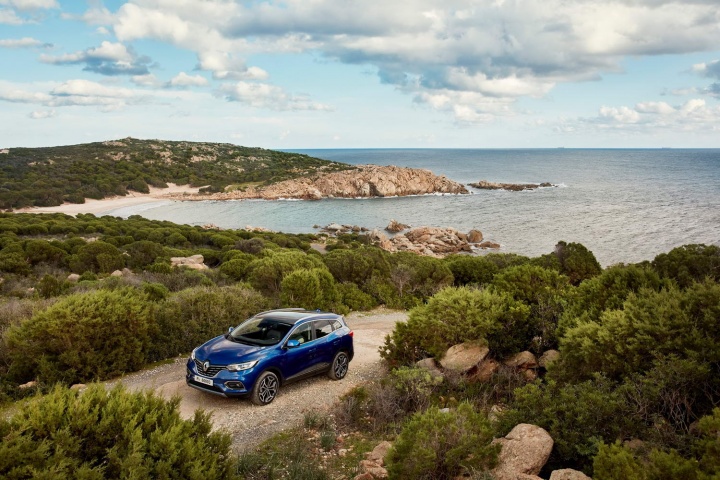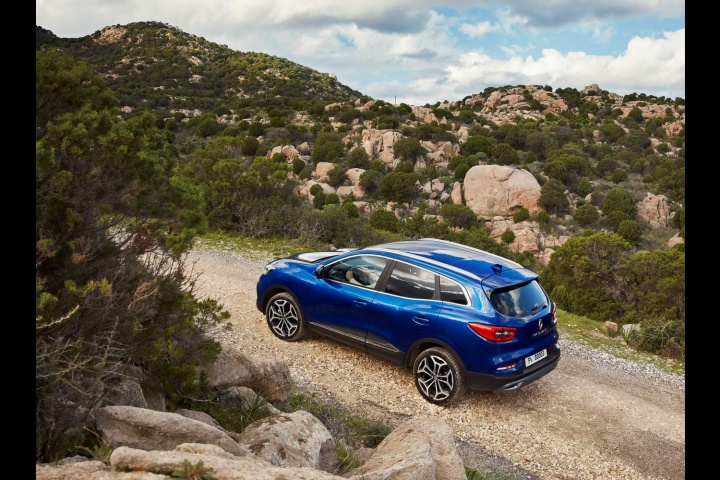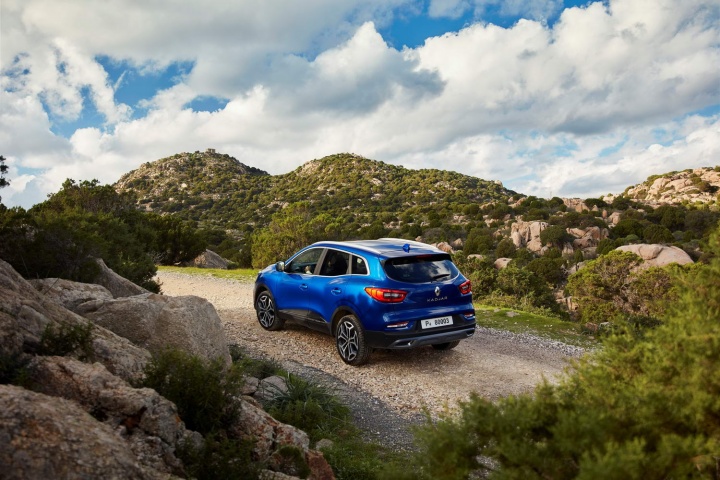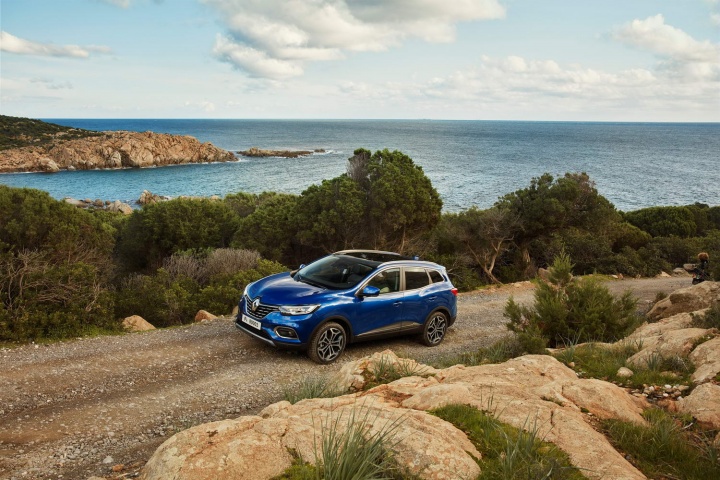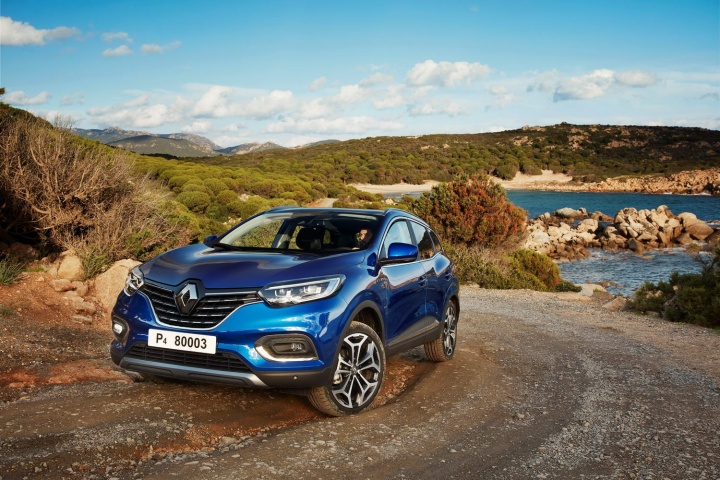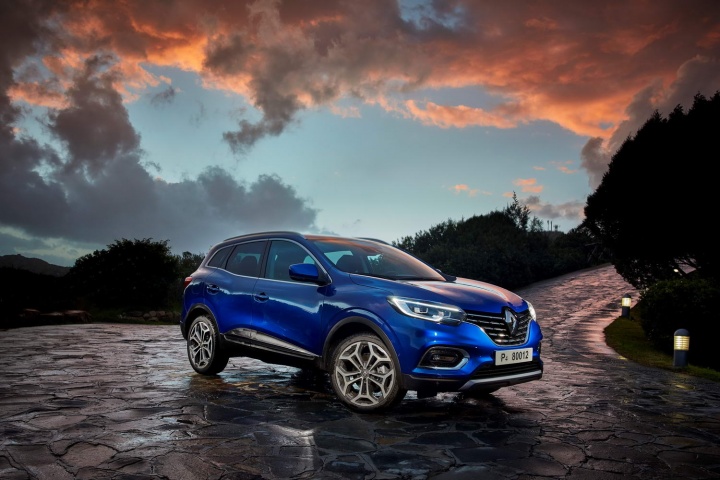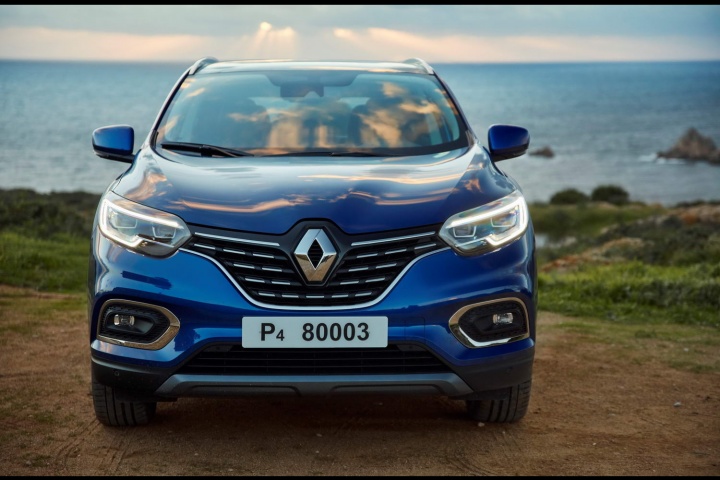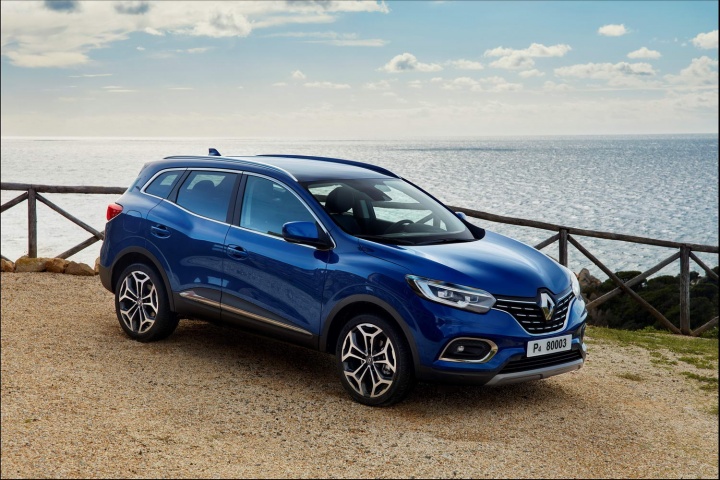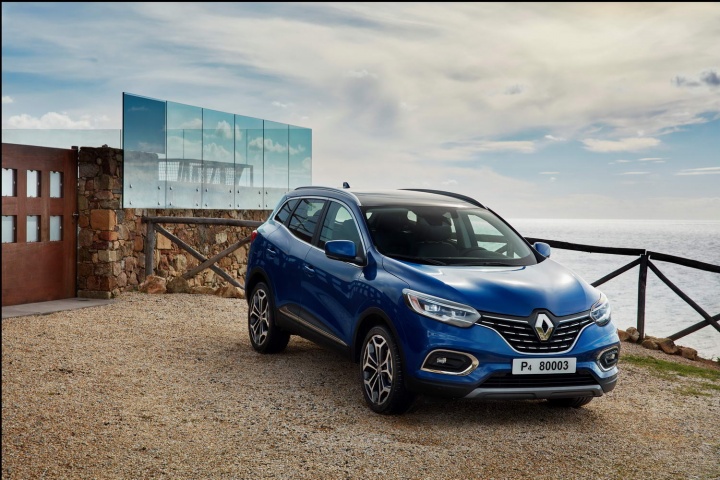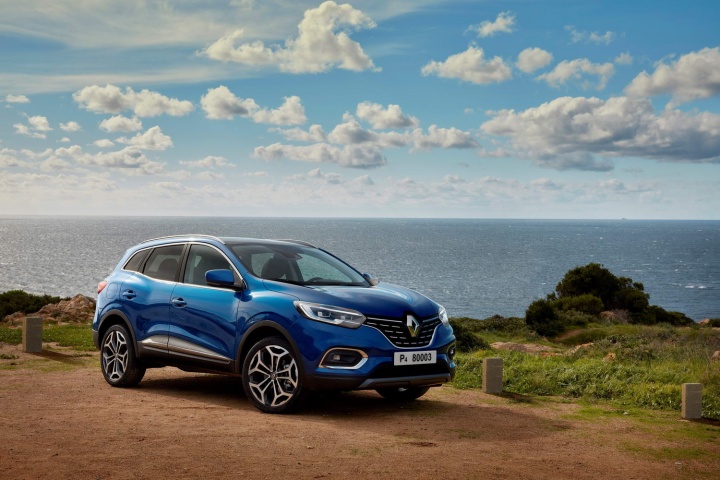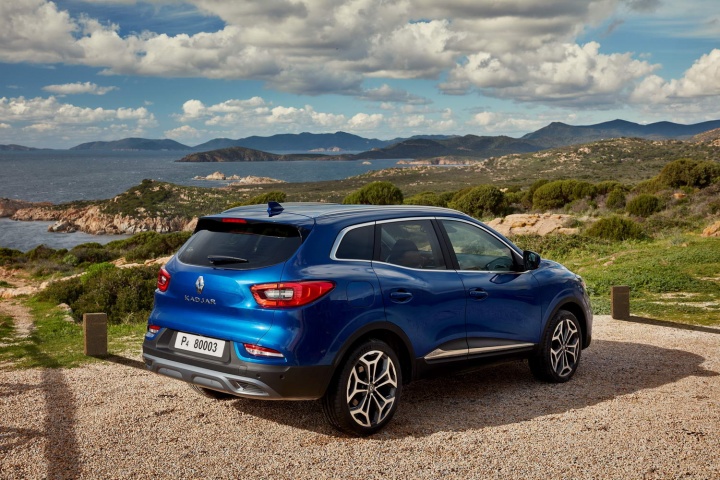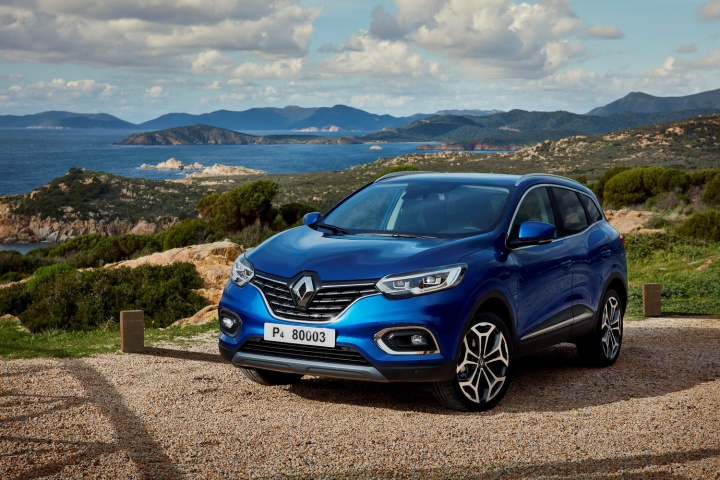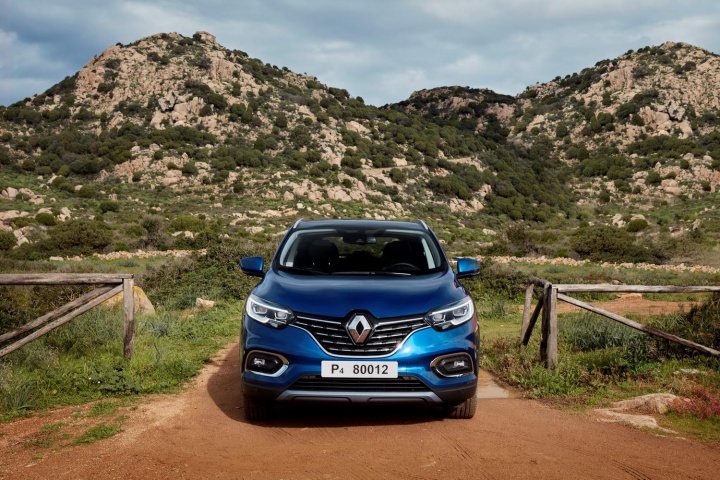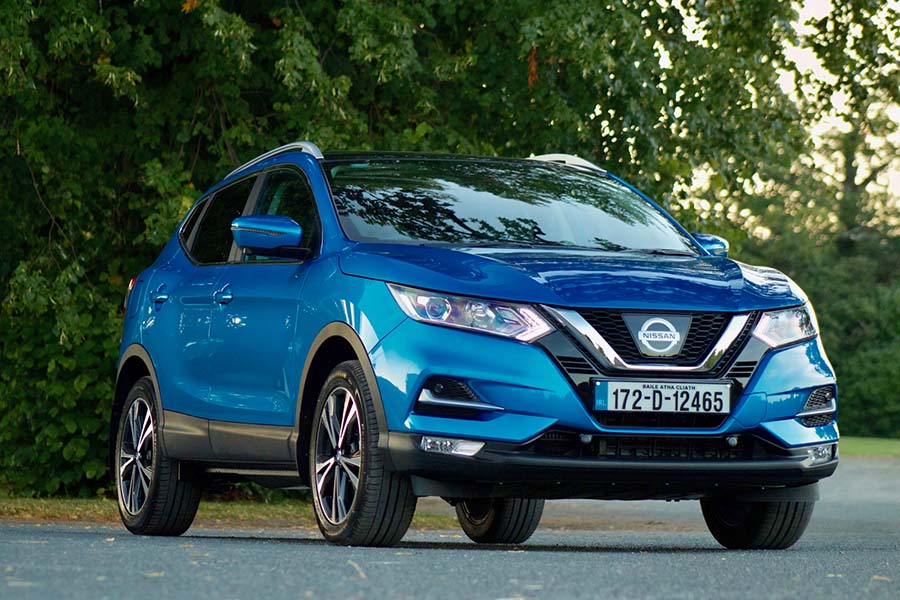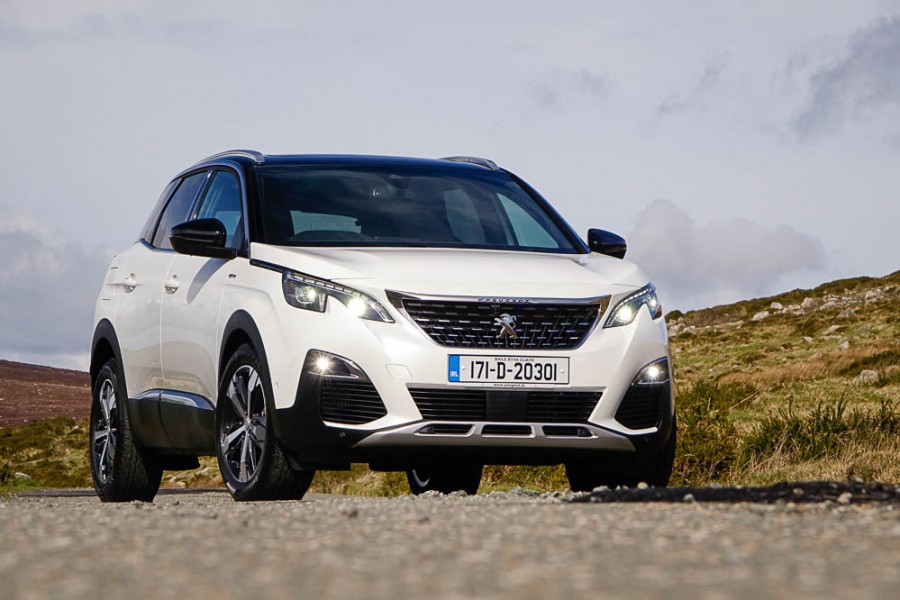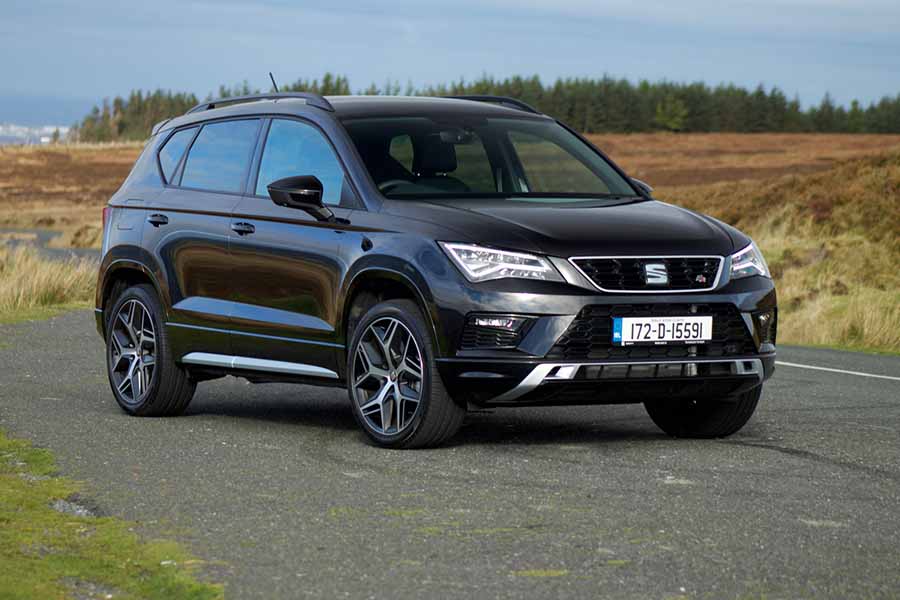Since its introduction in 2015, the Renault Kadjar crossover has been a hit with buyers seeking good value from an SUV. With more than 450,000 sold around the world, it's time for Renault to give the Kadjar an update to keep it fresh against a wave of newer rivals. We test drive the new petrol version.
In the metal
The visual changes to this refreshed version of the Renault Kadjar are subtle. So much so that it's only when you see the new and old cars side by side that the revisions become apparent. New bumper designs at either end give the Kadjar a wider stance. Flashes of chrome across the grille slats and its surround, in addition to the front fog lights, lift the looks, while dark grey scuff plates front and back hint at 4x4 ruggedness.
There are some revisions on the inside of the Kadjar, such as new door bins that can better accommodate larger items like drinks bottles. Most obvious is the new centre console layout featuring a touchscreen that sits flush with its surround. At first glance, it looks more up-to-date, but it is let down by the same clunky and slow infotainment system. Thankfully, both Android Auto and Apple CarPlay are available. There are two USB ports in the front, and two more in the back to allow rear passengers to keep their devices charged up.
Meanwhile, new climate controls on the centre console are simple and easy to use. Three rotary dials allow for intuitive adjustment and the temperature is neatly displayed within in large bold digits.
Look closer and you will notice a lot of different materials throughout the front, making it something of a patchwork of hard and soft plastics with some leather thrown in. That said, it does all feel reasonably well assembled and the cabin is roomy. Its rear seat bench has a 60/40 split and the front passenger seat can also fold flat, allowing for items up to 2.5 metres in length to be loaded inside the car. The boot remains unchanged at 472 litres (according to the VDA method).
Even the entry-level Kadjar models ride on 17-inch alloy wheels as standard, moving up to 19-inch rims for higher grade cars. Renault is also introducing three new exterior colours: Oural Green, Iron Blue and Highland Grey.
Driving it
The mechanical changes to the revised Renault Kadjar come under the bonnet, where there are some new additions to the engine line-up. Having already appeared in the Scenic and Captur, the 1.3-litre petrol TCe engine now joins the Kadjar range. This four-cylinder engine was co-developed with Daimler, which uses the same engine in the Mercedes-Benz A-Class, and it also appears in the Nissan Qashqai.
It comes in two power outputs for the Kadjar; the TCe 140 driven here produces (as you might have guessed) 140hp. A more powerful 160hp version is also available, which we drove with an automatic transmission and, while the extra power is welcome, we suspect it will have limited appeal in Ireland. So, sticking with the TCe 140, there is adequate performance on tap and the six-speed manual gearbox doesn't present any issues in its use, though anyone moving from a diesel may miss the low-down torque, so you'll need to drop down an extra gear in the petrol car for faster overtaking
All the petrol engines now come with gasoline particulate filters, much like those already used in diesel engines, to reduce pollution in line with the latest legislation. Both the TCe 140 and TCe 160 emit 135g/km of CO2 and officially use the same 5.9 litres/100km over the standardised 'combined' cycle. We'd expect most drivers to see figures in the low sevens for mixed urban use.
While not terribly exciting to drive, the Kadjar is smooth and, over a variety of road surfaces, it delivers a consistently good ride quality. You can place it accurately into corners and even with a touch more speed there isn't that much in the way of body lean. For a front-wheel-drive SUV, it remains surefooted, even if it doesn't have quite the sharpness of, say, a SEAT Ateca, but it easily matches the Nissan Qashqai on the road.
What you get for your money
The Renault Kadjar range is now more straightforward and more clearly defined than before, with four specification grades to choose from. There is also the choice of two petrol engines (TCe 140 with manual and automatic transmissions, and a more powerful TCe 160 manual) and two diesel engines (Blue dCi 115 manual and automatic, and a manual dCi 150 with front- or all-wheel drive).
It kicks off with the entry-grade 'Play' spec, which is available from €26,995 on the TCe 140 petrol engine and €28,995 with the dCi 115 diesel. Standard equipment includes 17-inch alloy wheels, tinted rear windows, front fog lights, LED daytime running lights and automatic headlight and wiper functions. On the interior, there is a synthetic leather steering wheel, sliding armrest, climate control and a seven-inch touchscreen infotainment system that includes smartphone compatibility via Bluetooth and Android Auto or Apple CarPlay.
The next step up is to the 'Iconic' specification grade, which carries a price walk of €2,700 on either diesel or petrol engines. In addition to the equipment in the 'Play' trim level, the 'Iconic' version gets roof bars, a handsfree key card for keyless entry and start, electrically folding door mirrors and interior upgrades such as a synthetic leather gear lever, flat folding floor, rear passenger vents and two USB charge ports in the back - useful for keeping devices charged up. Other features include front and rear parking sensors, a reversing camera and lane departure warning.
Renault's third trim grade, called 'S-Edition', is the first that is available with the more powerful TCe 160 petrol engine. Upgrades to the standard equipment list include LED headlights and LED front fog lamps, a panoramic roof and metallic looking skid plates on the front and rear bumpers. On the inside, there's part synthetic leather and 3D fabric upholstery with blue stitching, a height-adjustable front passenger seat and an anti-glare rear-view mirror.
The range-topping 'GT Line' spec is available across the whole engine range, including the dCi 150 diesel engine. Pricing for that engine is €37,995 while all others command a €2,600 price premium. It's the only Kadjar model to get 19-inch alloy wheels and leather upholstery on the seats and a leather steering wheel. The front seats are electrically adjustable and feature a cushion extender, while the driver's seat is also heated. Other equipment includes puddle maps, automatic emergency braking, 360-degree sensors and blind spot warning.
Summary
It's easy to see the mass appeal of the Renault Kadjar and, with this latest model, the French brand has done enough to keep it in the fight with its ever-growing competition. While it doesn't quite excel in any one area, the Kadjar makes for a great all-round package and one that should suit most budgets.

